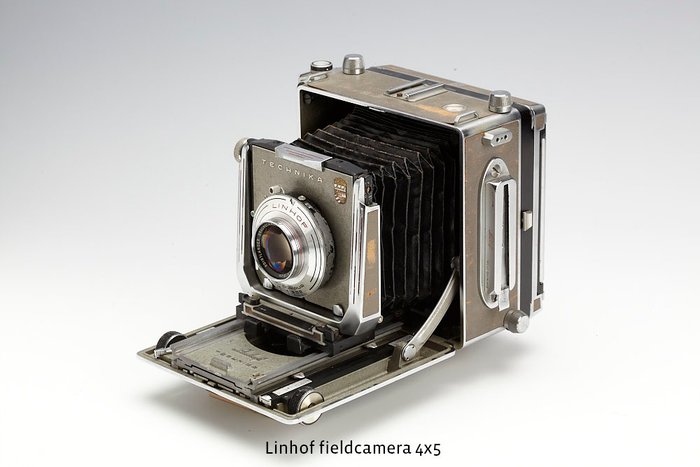
This movement is communicated to the rangefinder by a complicated system. They advance the lens that sits on a double rail. The focus adjusted on two large buttons at the front of the camera (bottom corners in the photo below). And, at the same time, giving the photographer precise focusing through a rangefinder.


Linhof hand held photographyĪ very interesting point about Super Technika medium format, which is an admirable engineering effort, was the determination to make a camera usable without tripod, using just the optical viewfinder instead of ground glass, as if it were a camera for snapshots, no matter with which lens. Linhof probably thought it would not be worth making this format with so many thousands available from Graflex. I also found it interesting to note that the film holders that came with the camera are original from Graflex, made for Speed and Crown Graphics.

The 120 roll film adapter (pictured above) is the same to whatever model. My Super Technika, although it was bought at an auction house in Munich, is a Super Technika 23, made for the American market, maybe it came from England, the actual birthplace of imperial system. It is not so serious to mix, but for a precise framing it is better to use right standard. Externally, film holders are the same, changing only the window for the film, so cameras accept both types, but the 2×3 camera has the ground glass and optical viewfinder frames designed to match that format, while at 6×9 the markings follow the European standard. In addition to the traditional European format known as 6 x 9 cm, native for German Linhof, it was also manufactured cameras for the American market in 2¼ x 3¼” format. There are still two models regarding film sizes.
Linhof technika iv for sale manual#
Reproduced from owners manual Super Technika 23 or 69 The top row shows more options for those who wanted to complement other focal lengths. This is, in this order, the bottom row in the following image. The most sophisticated lens set was formed by: But being a camera with lens board and ground glass, it is clear that anyone could adapt any lens that would fit the camera sizing. One normal, one wideangle and one of longer focus. In addition to the body and some accessories it usually came with three lenses. The Linhof medium format was usually sold as a set. The difference from III to IV, besides the usual black leather finish, that has changed to a light brown, is the fact that to release the rear of the camera it is necessary to act at 4 points in III, while in IV, a single lock allows the camera back to be removed. Depending on the type of photography, some of its features may never be used, but the photographer will always have to carry those kilos with him. The bad side of this versatility is that with a lens it goes beyond 2 kg. The Linhof Super Technika 2×3 is just that. The idea of a medium format with all the movements of a large format camera and yet a focus by telemetry with interchangeable lenses, as in a 35 mm, seems to be the formula of a dream camera. In Linhof, precision in mechanics is always impressive with the perfect fit between all moving parts. These go back to nineteenth-century tail board cameras, where the folding was at the rear and the film moved for focusing, instead of the lens. The basic concept is that of folding cameras, which can be closed and looks like a box. This is like a miniature of the celebrated Linhof Super Technika large format.
Linhof technika iv for sale series#
Linhof produces the Technorama series of panoramic rollfilm cameras, in both 6x12cm and 6x17cm guise.– Super Technika III 23 | Linhof | 1951 –



 0 kommentar(er)
0 kommentar(er)
